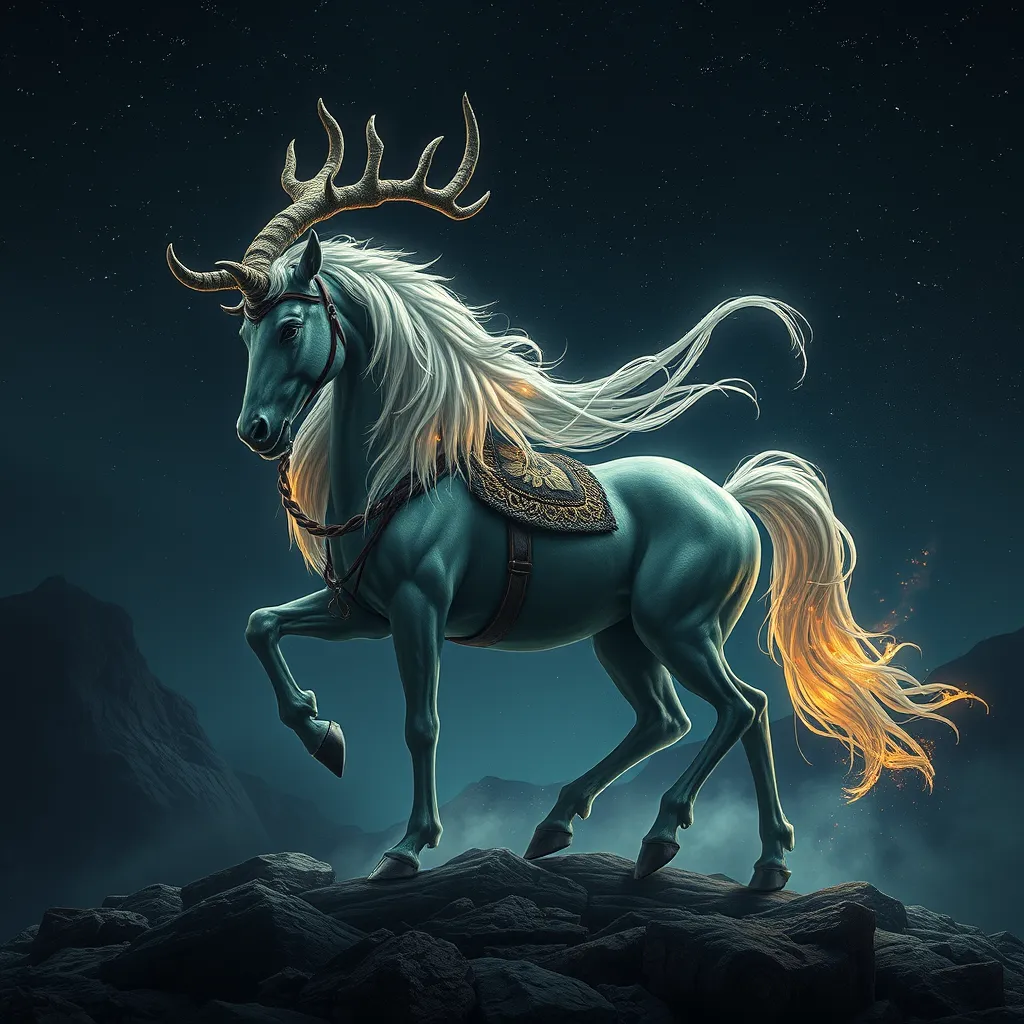Kelpies Across Cultures: Exploring Similarities and Differences in Different Mythologies
I. Introduction
Kelpies are mythical water spirits often associated with horses in various folklore traditions. These beings are typically depicted as shape-shifters that can appear as beautiful horses, luring unsuspecting humans to their watery graves. The significance of kelpies in folklore extends beyond mere stories; they represent deeper cultural themes and human fears related to nature and the unknown.
The purpose of this article is to explore the cultural variations and common themes surrounding kelpies across different mythologies, highlighting both the similarities and the unique attributes that define them in various traditions.
II. The Scottish Kelpie: Origins and Characteristics
The Scottish kelpie has its roots in the rich tapestry of Scottish folklore. Historically, these creatures are believed to inhabit lochs and rivers, embodying the spirits of the water. They are often portrayed as malevolent beings that can lead travelers to drown.
In terms of physical description, kelpies are usually depicted as strong, sleek horses, often with a dark or murky appearance. Some tales describe them as having glowing eyes or the ability to transform into human form. Their enchanting beauty is often contrasted with their treacherous nature.
Culturally, kelpies hold significant importance in Scottish folklore, serving as cautionary tales that warn against the dangers of water and the capriciousness of nature. They embody the duality of attraction and danger, representing the unpredictable nature of the Scottish landscape.
III. Kelpies in Irish Mythology
Irish mythology showcases similarities to the Scottish kelpie, with water spirits often taking on horse-like forms. However, there are unique features in the Irish stories that differentiate them from their Scottish counterparts.
- In Irish folklore, the term “water horse” is often used, and these beings are sometimes seen as guardians of lakes and rivers.
- Unlike the primarily malevolent kelpies of Scotland, some Irish water spirits possess benevolent traits, helping lost travelers or offering protection.
The role of water spirits in Irish culture is profound, as they often symbolize the connection between humans and the natural world, reinforcing the importance of respecting water sources and the dangers they can pose.
IV. Kelpies in Norse Mythology
Norse mythology features a variety of water spirits that bear resemblance to kelpies, such as the “Nix” and “Nokken.” These beings are often depicted as male or female spirits associated with water bodies and are known for their enchanting songs that lure people to their doom.
Comparing kelpies with these Scandinavian water spirits reveals considerable overlap in themes of seduction and danger. Norse tales often emphasize the tragic nature of encounters with these beings, reflecting a cultural consciousness that acknowledges both the beauty and peril of nature.
The influence of Norse mythology on kelpie narratives in Scotland and Ireland is evident, as many elements were shared and adapted through cultural exchanges over centuries.
V. Kelpies in Indigenous Australian Mythology
Indigenous Australian mythology also features water spirits, though they differ significantly from the kelpies of European folklore. Australian water spirits, such as the “Bunyip,” are often described in ways that resonate with the characteristics of kelpies.
- Bunyips are typically depicted as large, fearsome creatures that dwell in swamps and creeks, similar to the habitats of kelpies.
- They are often associated with the dangers of water and are depicted as shape-shifters, much like the kelpies.
The cultural implications of these stories are profound, as they reflect the connection of Indigenous peoples to the land and water, emphasizing respect for these elements and the dangers they can present.
VI. Kelpies in Other Global Mythologies
Across the globe, various cultures have their own versions of kelpie-like creatures. These manifestations often share common themes while reflecting the unique cultural context of each society.
- Asian Mythologies: In certain Asian cultures, water spirits known as “Naga” or “Dragons” are revered and feared, often possessing the ability to shape-shift and manipulate water.
- African Mythologies: Some African tales speak of water spirits that can transform into beautiful beings, drawing humans into the water, reminiscent of the kelpie’s allure.
- Native American Mythologies: In various Native American traditions, water beings such as “Water Man” or “Water Woman” embody both the nurturing and destructive aspects of water.
These examples illustrate that while the names and specific traits may vary, the overarching themes associated with kelpie-like creatures—deception, transformation, and the intertwined relationship between humans and nature—are universally recognized.
VII. Symbolism and Themes Associated with Kelpies
The kelpie narrative is rich with symbolism, often revealing deeper truths about human nature and our relationship with the environment. Key themes include:
- Themes of Transformation and Deception: Kelpies often embody transformation, shifting from beautiful beings to terrifying creatures, representing the duality of appearance and reality.
- Connections to Nature and the Environment: These myths emphasize the importance of respecting nature and recognizing its power, particularly in relation to water.
- The Duality of Beauty and Danger: The allure of the kelpie serves as a metaphor for the dangers hidden beneath beauty, cautioning against naivety and the consequences of temptation.
VIII. Conclusion
In summary, the exploration of kelpies across different cultures reveals a fascinating web of similarities and differences. While Scottish, Irish, Norse, Indigenous Australian, and other global mythologies share common themes surrounding water spirits, each culture uniquely shapes these narratives to reflect their values and fears.
Understanding these cultural myths and their interconnections allows us to appreciate the rich tapestry of human experience and the timeless lessons embedded within these tales. The kelpie legends endure across cultures, reminding us of the complexities of nature and the stories that connect us all.




